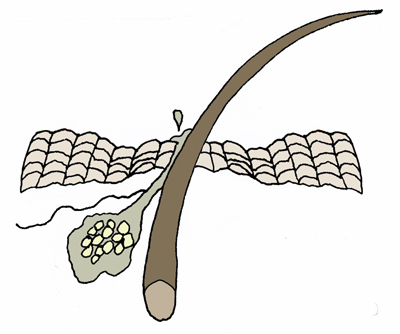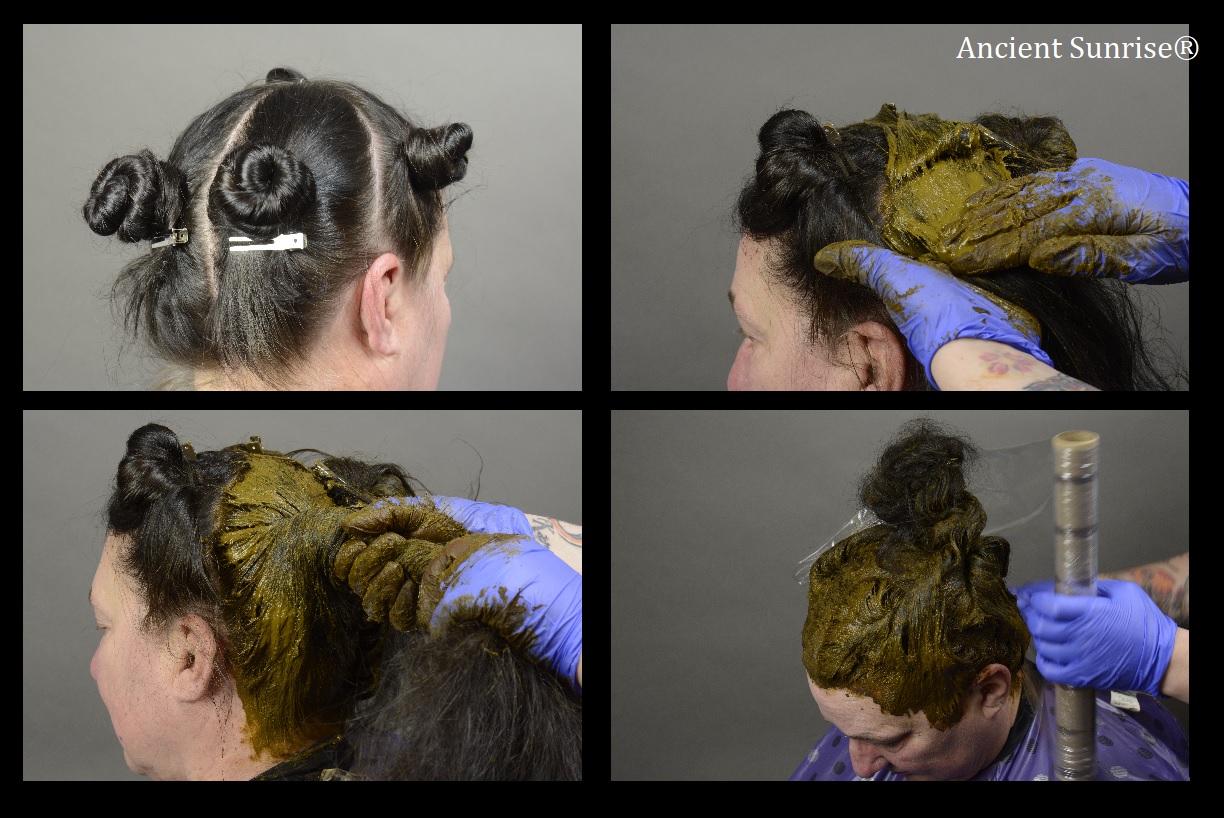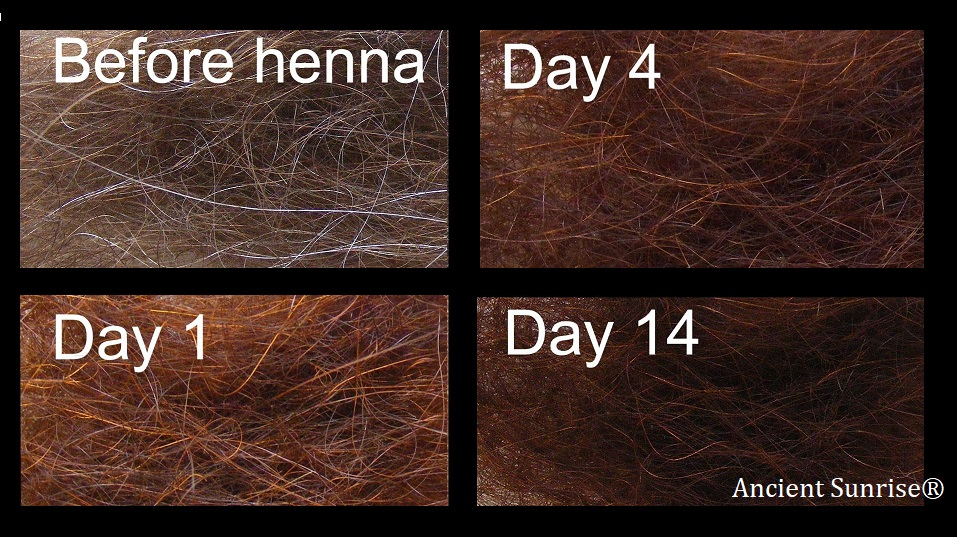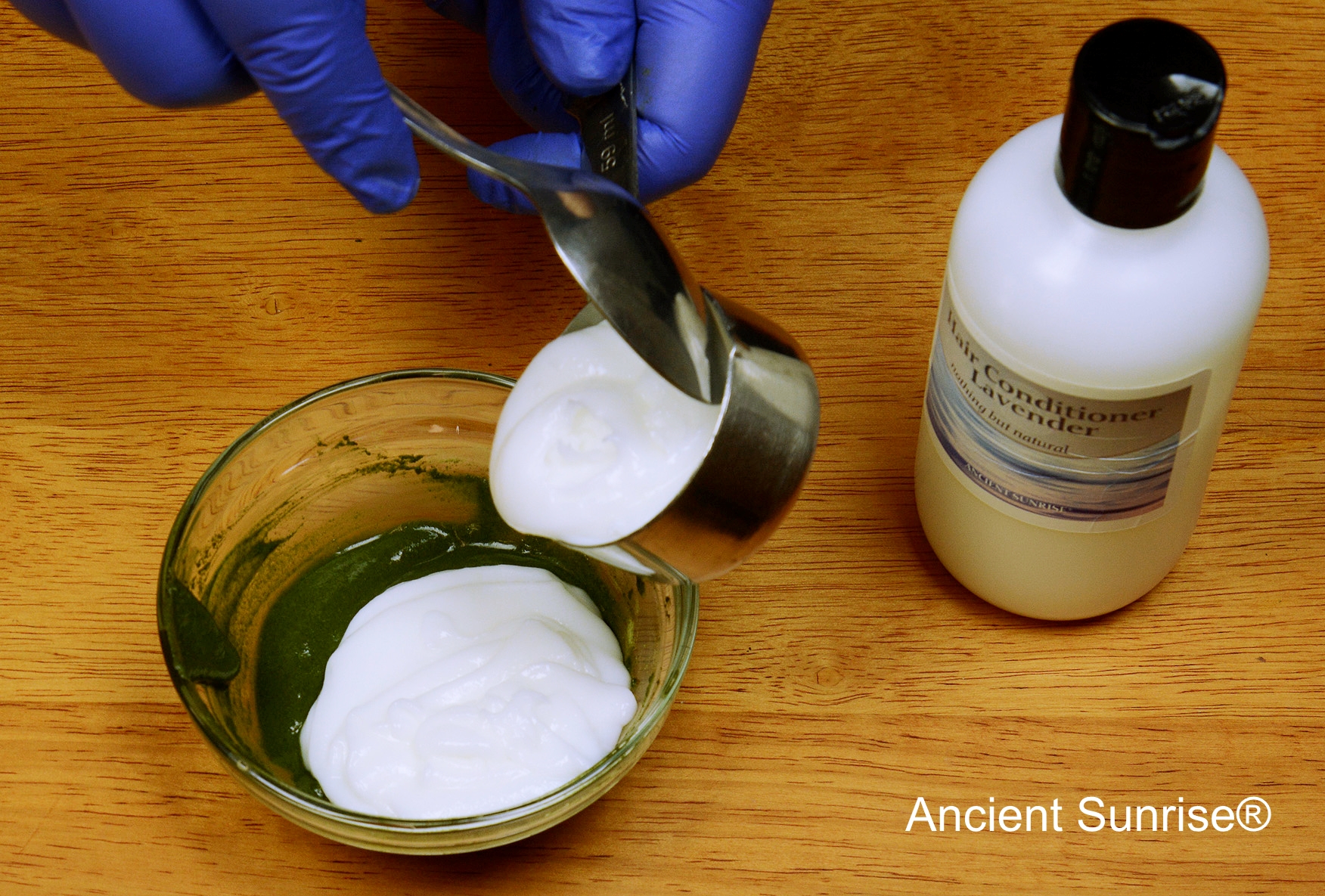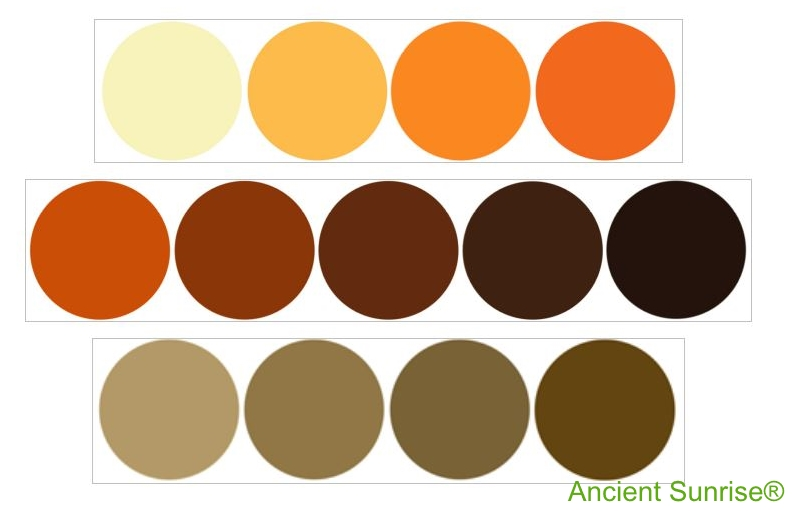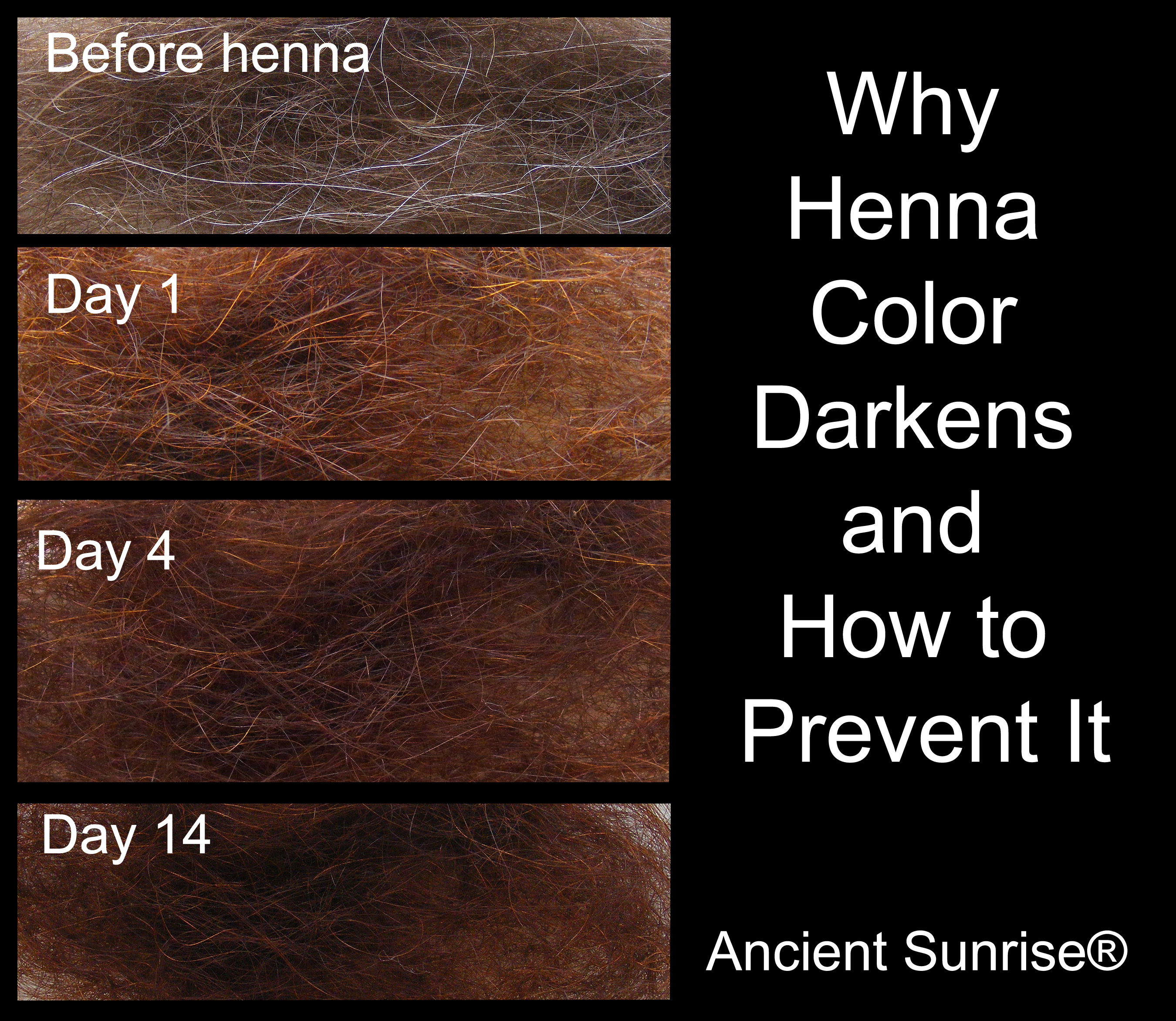
Some henna users report that their hair feels dry, coarse, brittle, or unmanageable after washing out their henna. What is happening is the hair is going through a temporary state. This temporary state has little to do with moisture or lack thereof, and more to do with the hair’s physical structure. The process of dyeing with henna can cause a temporary change on the surface of the hair strand. The hair goes back to its normal texture within a couple days. Smoothing can be expedited with conditioning or an apple cider vinegar rinse.
This article will discuss the physical structure of hair, the sensory interpretations of “dry” and “moisturized,” and offer solutions for lessening the undesirable texture which some may experience during the first few days following a henna treatment.
Hair Structure
A strand of hair is not one solid thing. If you were to see a cross sections of it under a microscope, you’ll notice that a hair strand is built of many tiny scales of keratin overlapping each other in layers over a central core. The outer layers of keratin are relatively hydrophobic, or waterproof, and surround a central cortex composed of a bundle of long cells called cortical cells, which contain DNA information and melanin. The cortex is more prone to water swelling than the outer layers. This is what causes hair to stretch further when wet.
A strand can only stretch so far and be able to spring back to its natural length. Beyond that extent, the strand will remain stretched and in a weakened state. Beyond that still, the hair will break. Excessive moisture within the cortex weakens the hair structure and leaves the hair vulnerable to stretching and breakage. The right balance of moisture is necessary to maintain healthy structure. Healthy hair does this on its own with its layer of hydrophobic keratin cuticles and the thin coating of oils produced by the scalp.
If it helps, think about hair like a bundle of cooked spaghetti coated with layers of tiny shingles made of the same material as your fingernails. You want the spaghetti to stay al-dente. Too wet, and the spaghetti will stretch and break. Too dry, and the spaghetti will also be vulnerable to breakage. The cuticle barrier is extremely important in regulating moisture within the cortex. When damage is incurred on the surface, gaps formed by broken or missing cuticles contribute to the hair’s overall weakened state, from a weaker outer structure to a more exposed inner structure.

All hair is subject to weathering over time. The cuticle structure is relatively resilient. Hair can flex, stretch, and be exposed to daily friction and tangles and still be healthy. Hair that is straight tends to have a rounder diameter, like mechanical pencil lead, while curlier hair would appear elliptical when observing a cross section. The cuticles of straight hair tend to overlap more tightly, while cuticles on curly hair have more space between them. Because of the way cuticles are arranged, those with curly hair sometimes find that their hair is more prone to breakage.

It is normal that the cuticle layer is tighter and thicker near the scalp, where the hair is newly grown and has not yet had time to experience damage. Nearer to the ends, the hair is older and apt to have a thinner cuticle layer that is more jagged. Split ends are the result of the complete loss of the cuticle layer, and the splitting apart of the inner cortical bundle.
Hair that has been processed with chemicals or otherwise damaged will have cuticles that stand up more rather than cuticles that lay flat against one another. Environmental factors can temporarily alter the hair’s cuticles. On windy days, your hair is thrown around, and the friction between strands causes the cuticles to lift. The strands tangle as the lifted cuticles catch onto one another. Dirt and build-up in the hair can further exacerbate tangling.

You may notice that on humid days, your hair is more frizzy. Moisture can cause the cuticles to be raised, and for the structure to weaken. This is why hairstylists advise against brushing wet hair, When hair is wet, it is more prone to stretching. All healthy hair will stretch a little and bounce back, like a coiled spring. Using Ancient Sunrise® Zizyphus Spina Christi to wash and condition your hair is a great way to keep it smooth and prevent excess moisture from weakening your hair.
What We Interpret as “Dry and Damaged” vs. “Smooth and Healthy”
When the cuticles are raised, the hair feels “dry” or coarser and less manageable. We often misinterpret this texture as “dryness”, believing that the hair is lacking moisture. As mentioned above, moisture itself can sometimes cause raised cuticles, so clearly this is not the case. It is simply a temporary change in the physical shape of the hair strands as a reaction to its environment. While dry and damaged hair can also exhibit similar physical changes, the two are not synonymous.
Similarly, just because hair is artificially smoothed with silicones and glycerols, it does not necessarily mean that the hair is in a healthier or more moisturized state than it was prior to conditioning. Think of it this way: silicones and glycerols are also used in skincare and cosmetics, to smooth the surface of the skin, filling in fine lines and softening textural imperfections. Does that mean that your skin has suddenly become less wrinkled? No; it is a temporary fix to the way the surface of the skin feels and appears from the outside. As most of us have used store-bought hair care products since youth, we have been brought up with an implicit notion that tangled, crunchy feeling hair indicated dryness, and smooth, sleek hair indicates moisture.

What Happens to Hair During a Henna Treatment
During a henna treatment, moisture and acidity from the paste, along with the intermediary dye molecules migrate into the outer layers of the hair strand. The dye bonds to the keratin with the help of a Michael Addition bond. This process plumps the cuticle in a way similar to how fingertips become prune-like after a long soak in the tub. If your hair is not rinsed well enough, residual paste can also cause the hair to feel gritty and tangled, just as it might if there was some dirt in your hair. As the dye molecules settle into their places and oxidize, and the residual particles of the henna paste leave the hair, the sensation of dryness decreases.

Because henna’s dye molecule binds to keratin in a lasting way, the hair is strengthened and reinforced. The added reinforcement prevents breakage and balances moisture levels. Henna does affect the physical texture of the hair, so those with naturally curly hair may see a loosening of their curl pattern. For some, this comes as a blessing. For others who want to maintain their bounce, adding amla into the henna mix prior to dyeing can help to maintain the curl pattern.
Despite common misunderstanding, henna does not coat the hair; the lawsone migrates into the outer layers of keratin, staining them. The difference is like pouring sprinkles over an ice cream cone, versus dipping it in chocolate shell. Hair that has been hennaed can still absorb outside moisture, and it can be treated with oxidative dyes, lighteners, and relaxers, as long as only Ancient Sunrise© products have been used. Henna products that have not been lab tested for purity may contain metallic salts and other chemical adulterants that will react badly to other chemical treatments.
How to Fix Crunchy Hair after Henna
Now that you know the truth about how your hair’s texture changes, here are some ways to help your hair feel smoother, softer, and more manageable sooner after dyeing your hair with henna.
If you have a bathtub, the easiest way to ensure that the henna paste is fully rinsed out is to fill the tub with warm water and lie back, allowing your hair to submerge fully. Swish your hair around and move your fingers through your hair until all of it is moving freely in the water. This method is often referred to as the “mermaid rinse” or as our owner, Catherine Cartwright-Jones like to call it, the “swamp queen rinse.”
Afterward, drain the tub and work a large handful of conditioner through your rinsed hair. This will help any remaining paste to slip out more easily. Rinse with fresh water and repeat if necessary, until the hair feels smooth, then wash and dry your hair as you normally would. There is nothing wrong with washing and shampooing hair immediately after dyeing it with henna. Lawsone binds to the hair permanently while the paste is in contact with the hair, and washing will not cause anything to loosen except for residual paste matter and dye that did not attach during the processing time.
If you prefer not to use conditioner, diluted apple cider vinegar will help to smooth the hair and close the cuticle. Rinsing with cool water also helps the cuticle to tighten and close.

Final Notes
Because the texture of the hair after henna is so frequently mistaken as dryness, some people choose to add ingredients such as coconut milk or oil, egg, milk, yogurt, and other plant oils to their henna mix to prevent this feeling of dryness. Now that you know the truth, you’ll understand why adding food to your henna is unnecessary. These ingredients will inhibit proper dye uptake.
Highly acidic mixes can dry the hair and scalp, and irritate those with sensitive skin. This is especially common with mixtures using lemon juice. If you experience a sensation of itching along with dryness, consider switching to a milder acid such as Ancient Sunrise© Kristalovino and Malluma Kristalovino acid powders. These acids are derived from grapes, and much gentler on the hair and scalp.
All Ancient Sunrise© Henna for Hair powders are Body Art Quality, which means they are finely sifted and free of twigs, leaves, sand, and other particulates that can get caught in the hair. The process of applying and rinsing the paste can cause some level of friction, so those who have delicate and damaged hair may choose to use the following products, which have the absolute finest sift for the smoothest paste:
–Ancient Sunrise© Rarity Henna
–Ancient Sunrise© Zekhara Indigo
–Ancient Sunrise© Zekhara Cassia
The above products are also perfect for those with thick, curly hair because they will rinse out cleanly and easily, with no residue. So if your hair feels dry, just give it some time. As always, feel free to contact Customer Service at www.mehandi.com if you have any questions or concerns, and read the Ancient Sunrise© Free Henna for Hair E-Book to learn more about dyeing hair with henna.
Author: Rebecca Chou September 2017
Edited: Maria Moore August 2022













